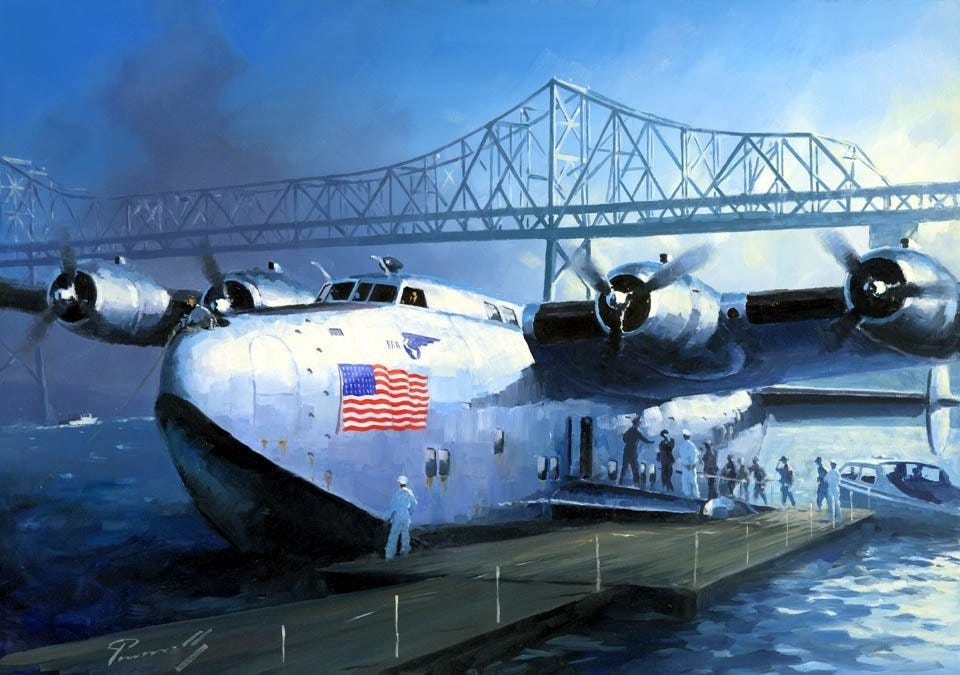LAGUARDIA TOWER LAGUARDIA TOWER. THIS IS PAN AMERICAN CLIPPER NC18602 INBOUND FROM AUCKLAND NEW ZEALAND. DUE TO ARRIVE PAN AMERICAN MARINE TERMINAL LAGUARDIA IN SEVEN MINUTES. OVER.It left San Francisco on 1 December 1941 bound for Auckland, NZ. They were two days out from Hawaii when they heard of the Japanese attack, and the Pacific route back from New Zealand was closed. Instead, they flew across Australia, Java, Ceylon, Africa, Brazil and up to New York the "long way around".
Along the way they pushed the airframe far beyond what it was designed for. The crew adapted to the problems, they avoided being shot down over Java or crashing on takeoff from the Nile. Giants strode the Earth in those days.

4 comments:
That is a wild story. Longer than I thought I'd sit and read, but really worth the time.
"Giants strode the Earth" indeed.
One hell of a story!!! And DOCUMENTED!!!
One of the Old Guys in my San Pedro radio club had been the guy who went out and surveyed the routes for PanAm in the 1930's. He was mostly concerned with the radio system they were using, as it was essential the standard places they stopped for fuel had adequate radio facilities to both communicate with the aircraft, and get an accurate bearing on it to help guide them in if they needed it. PanAm had contracted the work out to Aeronautical Radio, Inc, and that's who he worked for.
He said even then, they knew war was coming, and most of the routes had been planned with that in mind.
They were all retired between '45 and '50, and scrapped by 1950. They required a crew expertise that was expensive for long range navigation, and since there were so few large seaplanes in use by then, hard to replace. With the widespread building of long runways for 4 engine bombers, they were pretty much obsolete by the end of the war.
I am a little surprised that no one thought to develop them for firefighting purposes. Probably considered too big.
Would have made an interesting live-aboard vessel, with the wings and tail removed. The sponsons would have made it stable, I think. Better than chopping it up for aluminium.
Post a Comment